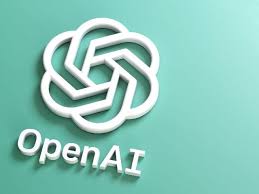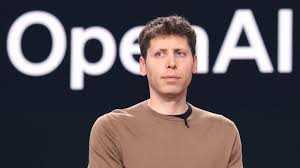Technology
Featured
OpenAI's New Guard: Inside the Shifting C-Suite and the Battle for the Company's Soul
Editor
Jun 21, 2025
min read
6 views

In the fast-paced world of artificial intelligence, where innovation is measured in months and corporate stability can seem like a fleeting concept, OpenAI has once again found itself at a crossroads. The recent departure of Chief Technology Officer Mira Murati, a key figure in the development of groundbreaking products like ChatGPT and DALL-E, has sent ripples through the tech industry, raising fundamental questions about the company's future trajectory, its internal culture, and the enduring tension between its founding ideals and its current commercial ambitions.
Murati, who ascended to the role of CTO in May 2022 and even briefly served as interim CEO during the tumultuous ousting of Sam Altman in late 2023, announced her departure in September 2024, stating a desire to 'do my own exploration.' While executive shuffles are common in Silicon Valley, Murati's exit is particularly noteworthy. She was widely regarded as a vital bridge between OpenAI's ambitious research wing and its rapidly growing product division. Her leadership was instrumental in translating complex AI breakthroughs into user-friendly applications that have captured the public imagination and cemented OpenAI's position as a market leader.
Her departure was not an isolated event. It followed a string of other high-profile exits, including Chief Research Officer Bob McGrew and a Vice President of Research, Barret Zoph. This exodus of top talent from the very core of OpenAI's research and development apparatus has fueled speculation about internal disagreements over the company's direction. Sources close to the company, who spoke on the condition of anonymity, have pointed to a growing divide between those who prioritize a cautious, research-focused approach to artificial general intelligence (AGI) and a more aggressive, product-driven strategy championed by CEO Sam Altman and the company's board.
This tension is not new. It is, in many ways, the central narrative of OpenAI's existence. Founded in 2015 as a non-profit research laboratory with a mission to ensure that AGI 'benefits all of humanity,' the organization underwent a pivotal transformation in 2019 with the creation of a 'capped-profit' subsidiary. This move, designed to attract the massive capital required for large-scale AI research, has been a source of both immense success and persistent controversy. Critics argue that the profit motive, even if 'capped,' inevitably compromises the organization's original altruistic goals, pushing it towards a focus on shareholder returns over public good.
Sam Altman, a staunch defender of the capped-profit model, has consistently argued that it provides the necessary resources to pursue the AGI mission. In a recent podcast appearance, he addressed the challenges of retaining top talent in a hyper-competitive market, particularly in the face of aggressive poaching attempts by rivals like Meta. Altman criticized Meta's strategy of offering massive compensation packages, suggesting it doesn't foster the 'right work culture.' 'We offer a different package, but it's about the mission and the ability to do important work,' he stated, highlighting OpenAI's appeal to those driven by a desire to be at the forefront of transformative technology.
However, the recent executive departures suggest that for some, the 'mission' may have become increasingly intertwined with commercial pressures. The company's enterprise growth has been explosive, with Chief Operating Officer Brad Lightcap detailing a surge in business and successful partnerships with major entities. While this commercial success is a testament to the power of OpenAI's technology, it also brings a new set of demands and priorities that may not align with the more purist research ethos that characterized the company's early days.
The challenge for OpenAI's new leadership will be to navigate this inherent conflict. The company must continue to innovate at a breakneck pace to maintain its edge over a growing field of well-funded competitors, including Google, Anthropic, and a burgeoning open-source movement. At the same time, it must stay true to its stated commitment to responsible AI development, addressing critical ethical concerns around bias, privacy, and the potential for misuse of its powerful technologies.
The departures of Murati and other key research figures represent a significant loss of institutional knowledge and a potential shift in the company's internal balance of power. As OpenAI barrels towards its goal of AGI, the decisions made by its new leadership will have profound implications not just for the company itself, but for the future of artificial intelligence and its impact on society as a whole. The battle for OpenAI's soul is far from over; it has simply entered a new and uncertain chapter.
Editor
League Manager Editorial Team





Leave a Comment